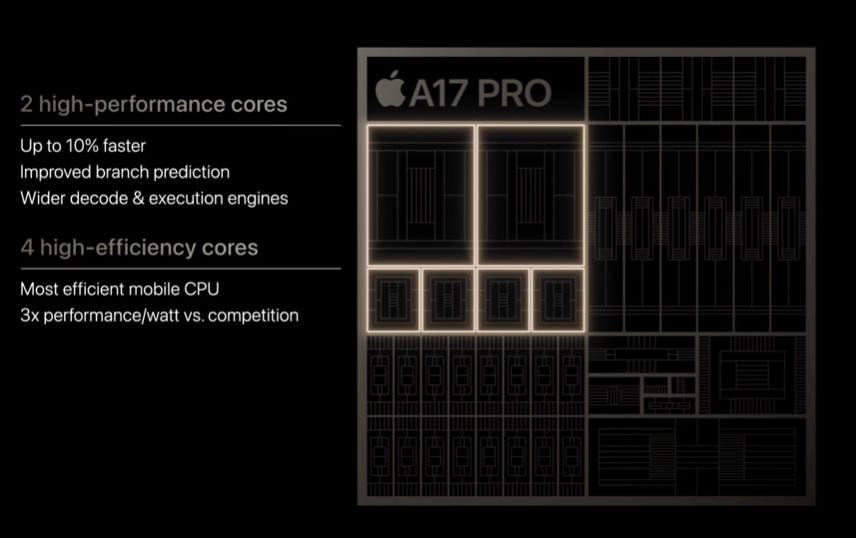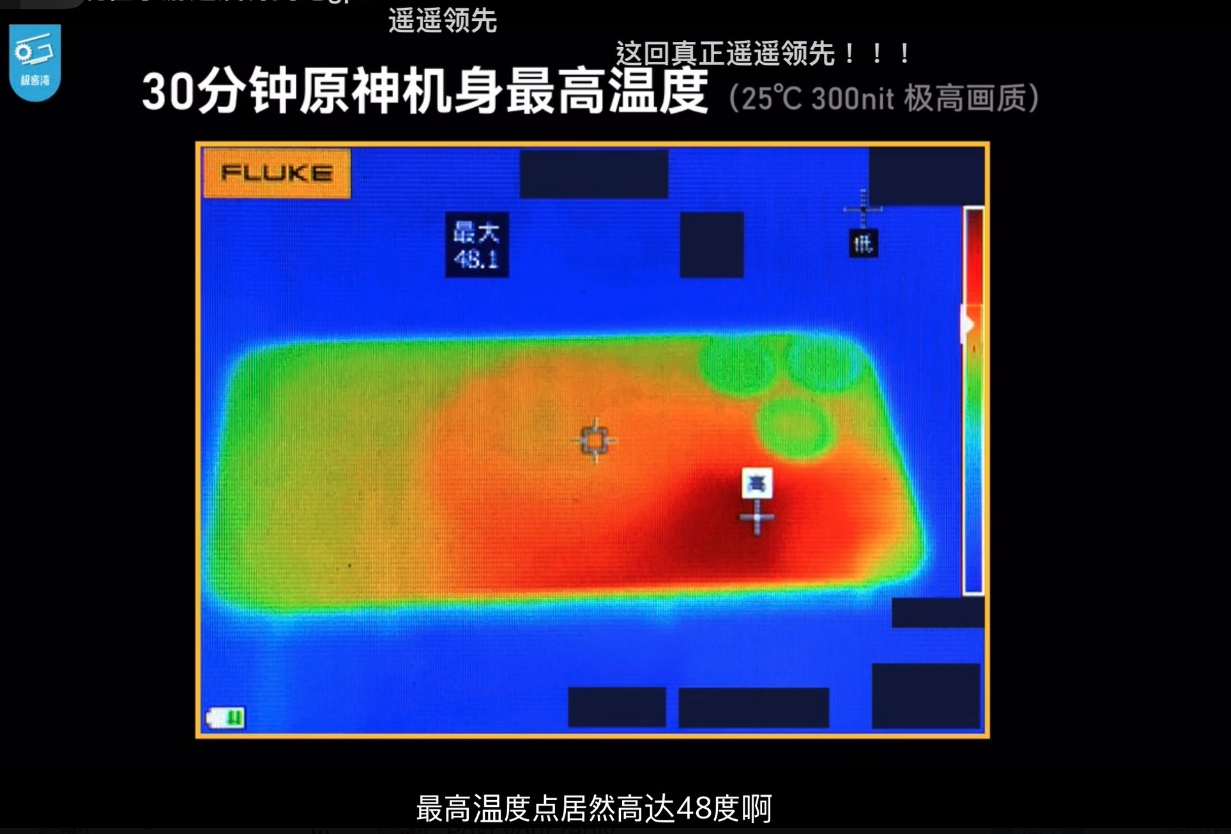Apple launched its all-new iPhone 15 series on the 12th of this month, and it has been available to purchase from the 22nd. Apple introduced a lot of new things with the iPhone 15 series, so much so that people have concluded that this was probably the most exciting iPhone launch event in a long time.
A17 Pro: The Chip Powering the iPhone 15 Pro Lineup
If we had to pick the single biggest innovation with the iPhone 15 series, it would be the A17 Pro chip. That is because it is the first smartphone chip in the world to be based on a 3nm process. It means that this chip’s transistors are 3nm in size. Besides the process, Apple has worked a lot on the GPU this year.
To give you an idea, the smaller the size of the transistors is, the lower the power consumption will be. All the while, you will also be getting the same performance compared to other chips with the same clock speed. At least, this is how it is on paper.
The A17 Pro chip comes with the iPhone 15 Pro and the iPhone 15 Pro Max and is fabricated by TSMC. For some context, all the other chips in the industry come with a 4nm process. And it is going to stay like that for a while. That is because Apple has all the supply of TSMC’s 3nm chips for the first year.

Throttling and Overheating Issues on the iPhone 15 Pro Lineup
However, it is not always smooth sailing when a new piece of technology is in town. Similar is the case with the A17 Pro chip inside the iPhone 15 Pro and the iPhone 15 Pro Max. Ever since people have got their hands on these two models, there have been a lot of complaints regarding the performance of this new chip.
Overheating
First of all, there is the overheating issue. In the Wonderlust event, Apple claimed that the A17 Pro could handle even AAA titles. However, when some reviewers like Geekerwan tested this, they got some interesting results.
First, he ran some benchmarks and played heavy mobile games like Genshin Impact. In the gameplay, the iPhone 15 Pro Max reached a temperature of 48°C on high settings. The ambient temperature was 25°C, and the brightness was set to 300 nits. On the brighter side, the iPhone managed to maintain a higher average frame rate of 59.1 frames per second compared to the 56.5 frames per second of the A16 Bionic of last year.

The newer chip also consumed less power than the older one, though not significantly. The A17 Pro drew 4.13W of power, and the A16 Bionic drew 4.32W.
The same reviewer got pretty good results in benchmark tests, too. In the Geekbench 6 CPU platform, the iPhone 15 Pro Max achieved an impressive 2999 and 7779 points in the single-core and multi-core tests, respectively. That is a 20% increase over last year’s flagship featuring the A16 Bionic. However, there is a catch. Geekerwan achieved these results by using a heavy-grade cooling system. That shows how bad the heating problem is on the newest Pro iPhones.
Aside from these technical things, the iPhone 15 Pro and the iPhone 15 Pro Max also seem to be heating quite a lot. People have reported overheating even while charging the phone.
Throttling
The other issue with the A17 Pro chip is throttling. The same reviewer sideloaded the game Resident Evil Village on the iPhone 15 Pro Max to test Apple’s claims that this new chip can run console games. The resolution of the game was set to 1560 × 720. In the test, the iPhone 15 Pro Max started throttling the performance while running the game, and the frame rate dropped to around 30 frames per second.
Reviewer TechTablets found that the iPhone 15 Pro Max with the A17 Pro chipset experienced significant throttling under load. After just 2 minutes of GPU stress testing, performance dropped by almost 25%; after 20 minutes, it had declined by 34%.
No Cooling System
Neither of these issues is helped because Apple is adamant about not providing a proper cooling system on their phones. An appropriate cooling system would have solved half of the problem. The only thing Apple said in their Wonderlust event was that the new titanium frame should help in better cooling.
Conclusion
The reason behind these issues with the iPhone 15 Pro and the iPhone 15 Pro Max is pretty simple. It is just that the A17 Pro chip that powers them is not as optimized yet as we would like it to be. That is primarily because it uses a new technology that seems quite far from being mature. It is also quite energy-inefficient at the moment. Part of the problem is also the lack of a proper cooling system. So, at this point, we can only hope that Apple fixes these issues with updates.




